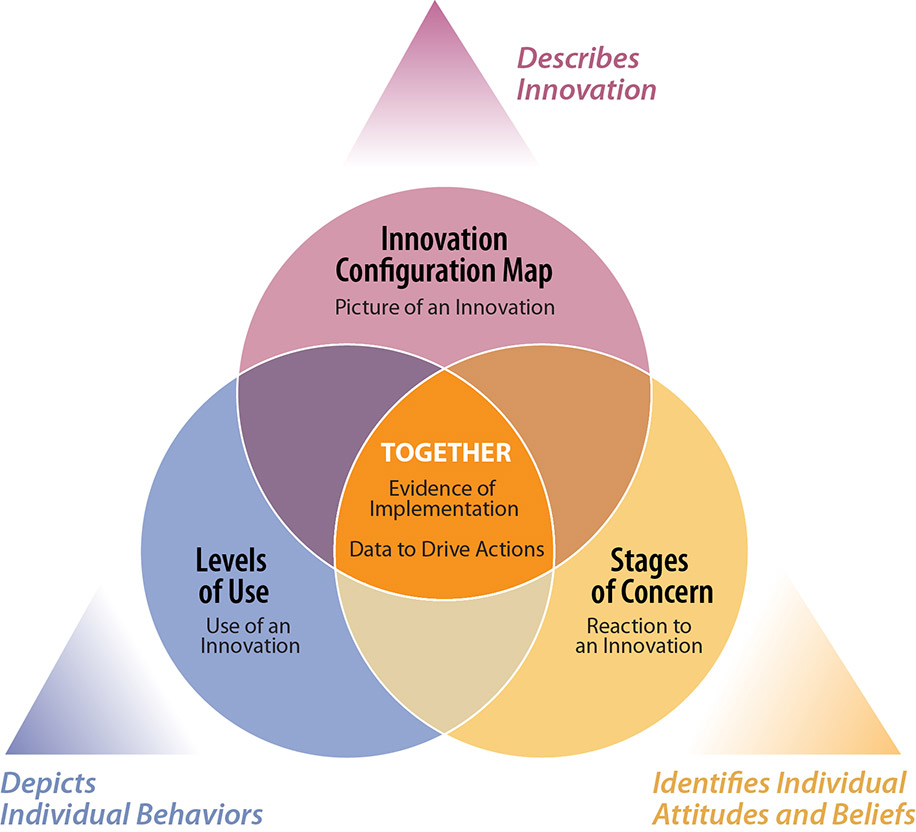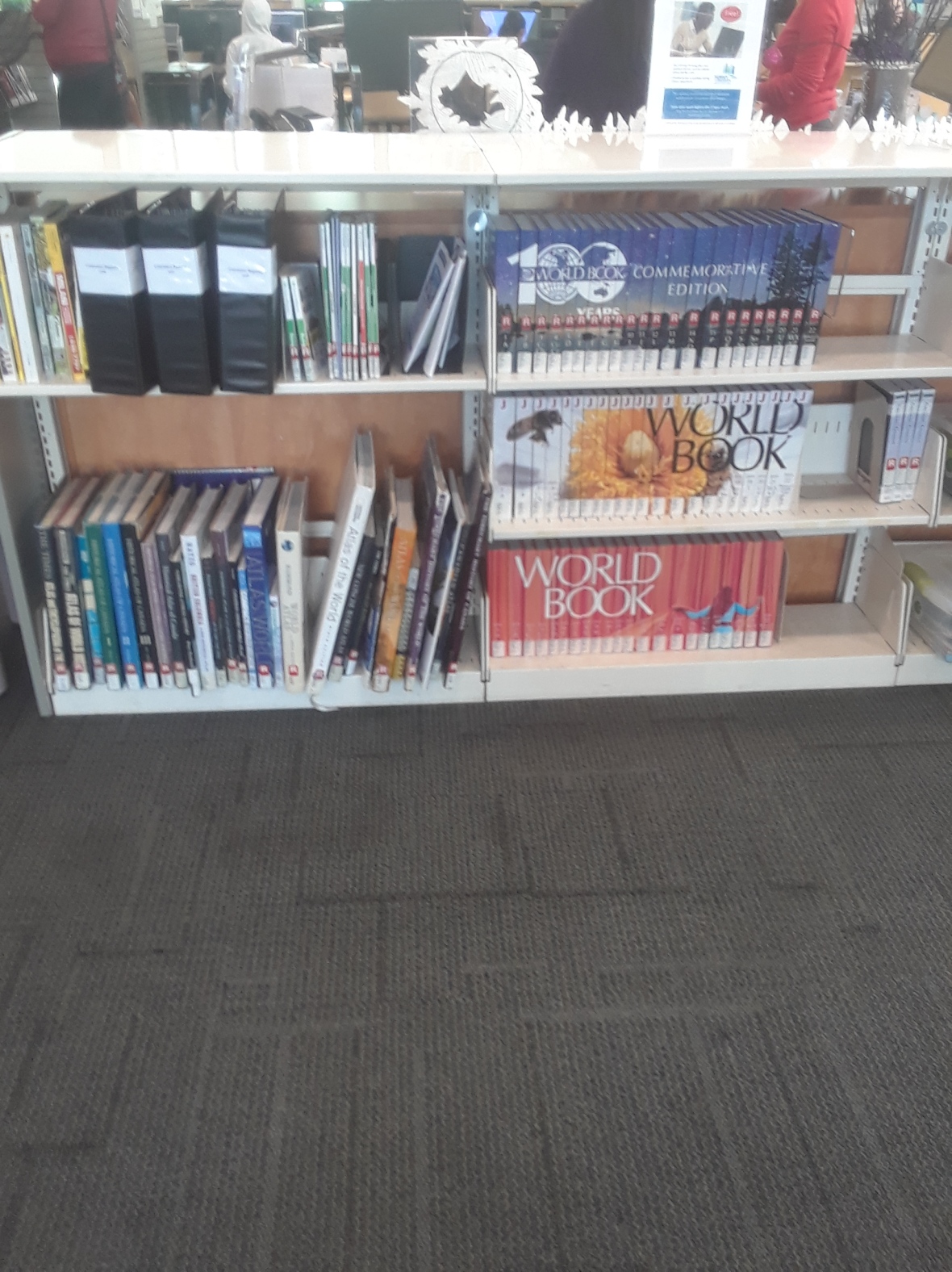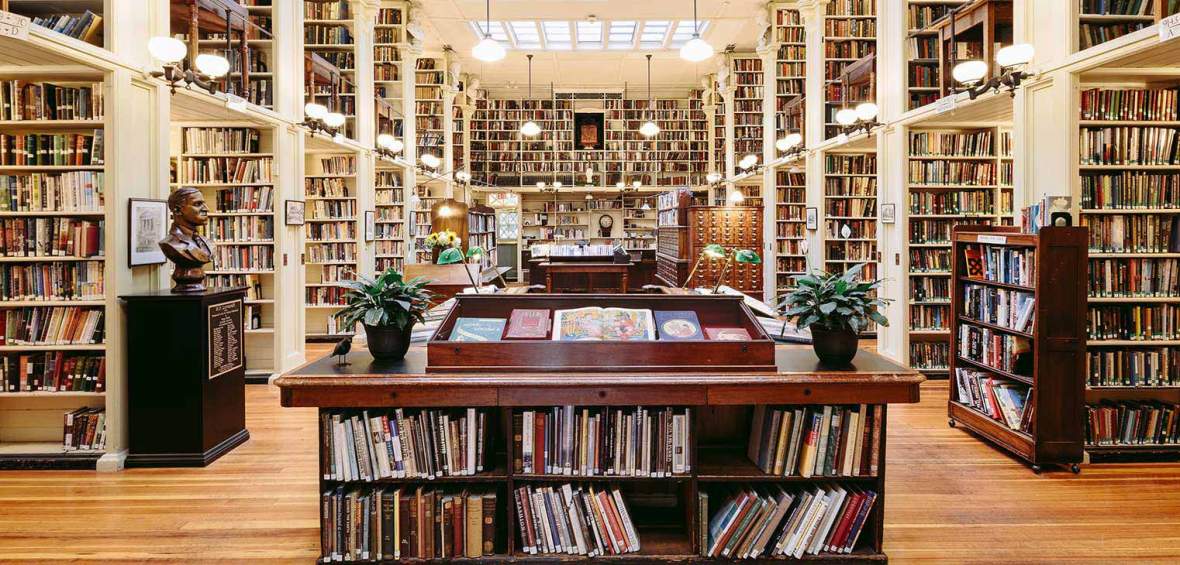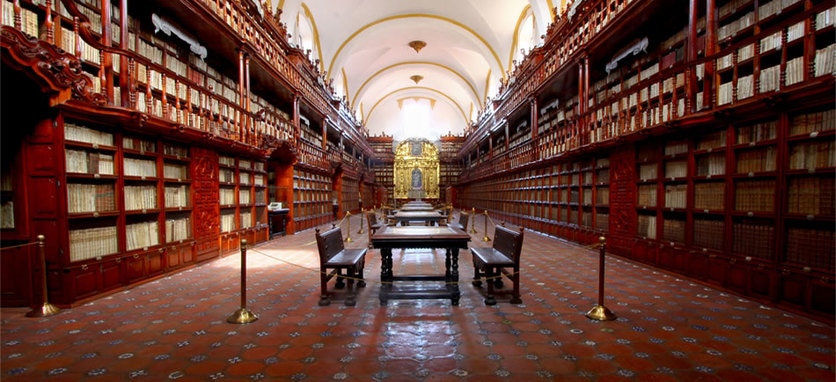Context of the Library/Learning Commons
Our school is an inner-city public secondary school in Surrey, British Columbia. Despite the negative connotations the moniker “inner-city” brings to mind, our school is noted for its high academic and musical achievements. Our school is also an International Baccalaureate school (IB school) for grades 8 through 10; this program is called the Middle Years Program or MYP, of the IB world educational organization. The IB program focuses on international-mindedness, and encourages students to become caring, service oriented, thinking citizens in their communities.
Our Library/Learning commons is physically substantial in size with roughly fifty percent of the square meterage divided between fiction and non-fiction books in the stacks, ample study space in the form of moveable tables, a few comfortable chairs, many highly visible periodicals, private meeting rooms for both students and teachers, and computers that are present on almost all of the glass-walled perimeter space. The Library/Learning Commons is also centrally located within the school and the space is used not only for library use but also for tutorial/homework club which runs three days a week after school, for all staff meetings, department head meetings, and specific types of exams on occasion in addition to research and booked computer use time.
The Library/Learning Commons is an important and valued space within the school, it is well respected and utilized by students and staff and the Teacher-Librarian is a visible, and active colleague, who regularly collaborates and assists teachers across all disciplines with unit planning, individual lesson plans as well as seeking out resources on teacher’s behalf.
Our Library/Learning Commons also participates in the “Surrey Teens Read” annual book ranking, and these books (which have been personally read by the Teacher-Librarian as well as by students) are on full display as you first walk in to the library and students are able to vote on their favourite book to nominate the Surrey Teen book of the year. Finally, our art department, and Aboriginal department share space with the library to showcase student artwork throughout the Library/Learning Commons as well as Aboriginal events happening within the school. While there is a reference section devoted to International Languages, there are very few books available, are only in French and are rarely checked out, although the Teacher-Librarian shares that some students will browse through these items on occasion. The International Languages Reference section will be the focus of this report.
Context of the Library/Learning Commons:
- Current student population is 1, 289 students
- Library is well-used by students in terms of book check outs and computer usage
- Student demographic is culturally diverse, with a multi-lingual population within the school
- Library/Learning Commons computer bookings and class research time is booked through the Teacher-Librarian’s open calendar bookable online at school
- Students may check out up to 4 books at a time and may keep materials for 2 weeks with the option to renew at the end of the 2 weeks
- Magazines and other periodicals may also be taken out for the same time period and eBooks, including an ereader (eBooks not well utilized by students)
- Reference area of the Library/Learning Commons is very small and not well utilized and mainly comprises dictionaries, atlases and large books that are often dated in age
- The school subscribes to both print and digital resources in French, Spanish and Chinese
- Large, up to date teacher resource area, that is well-utilized and all staff may take out books and other materials for an indefinite period of time with the permission of the Teacher-Librarian
- Teacher-Librarian has a weekly report of what’s happening and what’s new in the Library/Learning Commons
- Teacher-Librarian welcomes suggestions, and collaboration to purchase new materials for the Library/Learning Commons
Specific Library/Learning Commons Data:
- Items in collection number 27, 730 including all print, audiovisual, and digital resources (eBooks and digital)
- Average age of the collection is 2004
- There are approximately 4.6 items per student based on current school population which is down considerably from prior years
- Fictional books occupy the most visible shelf space as do periodicals
- Computer stations are plentiful and easily accessible to students
- Printers are available for student use
- Laminating available to teaching staff
- Basic office supplies available to students while they are working in the library (pens, pencils, 3-hole punch, post-it notes, stapler, erasers, etc.)
The following collection map table reflects the print collection that is currently in the Library/Learning Commons:
Category Non-Fiction October 2018
Dewey Number of Books Average Age
000 Computer Science, Information and General Works 171 2005
100 Philosophy & Psychology 345 2004
200 Religion 350 2000
300 Social Sciences 2, 111 2002
400 Language 106 1998
500 Science 578 2005
600 Technology 957 2004
700 Arts & Recreation 832 2002
800 Literature 4, 661 2005
900 History & Geography 2, 953 1993
Category Fiction, Reference, and other print materials:
Classification Number of Books Average Age
General Fiction 13, 149 2006
Reference 230 1993
Paperbacks (not catalogued) 0 N/A
Easy Readers 172 2007
Audio Visual (DVD’s, etc.) 683 2005
Collection Evaluation Report Sub-set: Foreign Language Materials (Print)
The Library/Learning Commons has a print section devoted to foreign language materials, that is highly visible to students and staff, and comprises a unique shelving structure, but the print material is incredibly limited in number and scope and contains only French language books that are of a juvenile nature. While the report generated by the Teacher-Librarian lists 106 books in the language category there are in fact, less books. Our school, as an IB school must teach at least 2 international languages, and all students must take both of these languages in grade 8, and must choose 1 in grade 9 and follow through with this same language until grade 10 at a minimum. Our international language courses are in French and Spanish.

The above image shows the small metal shelving unit that displays the entire international languages reference section. Despite the display stating that books are in French and Spanish, there are only French books present. There is not a single book in Spanish. Photo source: report’s author.
The type of books available in the Library/Learning Commons shown above are not entirely age appropriate for secondary; however, as these resources are rarely used by students, they are in excellent condition and some titles may appeal to the junior grades. Sample titles include French colors, French numbers, or simple French phrase books at the most basic level, although there are a few Tin Tin series books by Herge. Such books are of little benefit to students of French, and there are no Spanish print materials housed in this collection. This collection does not benefit students at the senior level, in either French or Spanish. Interestingly, there is 1 new Spanish book to the collection this year entitled “Cuentos de Buenas Noches para Ninas Rebeldes: 100 Historias de Mujeres Extraordinarias” by Elena Favilli et al (2017) translated from the original English book “Bedtime Stories for Rebel Girls: 100 stories by extraordinary women” also by Elena Favilli.
This foreign language sub-set in the Library/Learning Commons collection must be increased to reflect the school’s academic MYP program and comprise far more print materials in both French and Spanish. It is also recommended that foreign language print material include additional languages such as Tagalog, Chinese, Punjabi, Korean and Arabic to reflect the diverse nature of the student demographic. Such an increase in materials to the collection would better reflect the academic subjects taught in the school and be more inclusive and reflective of the student body and support the aims and goals or creating internationally-minded citizens, as dictated by the International Baccalaureate organization. Resources must include fiction and non-fiction materials (novels in French and Spanish, as well as linguistic items).
Conversely, the Library/Learning Commons digital resources are excellent for French and Spanish, and some Mandarin Chinese electronic materials are also offered (Mandarin and Cantonese speakers can both read these resources as they use the same characters for both languages).
Recommendations:
Foreign language print materials should more accurately reflect the International Languages taught at the school, which are French and Spanish. A variety of fictional books, magazines, and other print materials, including print matter in additional languages, would better serve the student body and teaching staff, and increase circulation and interest in these materials. Resources must include fiction and non-fiction materials (novels in French and Spanish, as well as linguistic items). The purchase of these items should be completed within the first month of the start of the school year, by the Teacher-Librarian and the International Languages Department.
Conclusion/Reflection
I realized as I embarked upon this assignment that the only way in which I could complete it was through the expertise of my school Teacher-Librarian and in that realization, I learned so much with respect to looking at the collection, generating reports and learning about other, external companies that work with schools and librarians to manage collections and digital resources. Prior to this I had not fully considered the extent of the collection housed within the Library/Learning Commons at our schools and the work that is needed to maintain it and ensure that it is of benefit to as many students and colleagues as possible, and in saying that, how challenging it is to please everyone in a school as large as ours. Collections can also be personal in nature and I am always intrigued by sub-sets within collections, such as foreign language materials, and wonder what processes are involved in having certain materials, and even certain languages, over others, and how those resources were decided upon in the first place. It was somewhat cathartic to voice my opinion on the minimal print international language materials that are available in my teaching disciplines of Spanish and French at my school and other schools. Nevertheless, the digital resources are wonderful with respect to languages in our school, and I can appreciate that it is difficult to find suitable resources of any kind, that will be well circulated and utilized, without consuming too much shelf space among all the other subjects and disciplines in any school and are within budget. In sum, it has made me appreciate the monumental task that maintaining a collection entails and the careful thought that must go into the selection of a school’s resources while trying to please as many patrons, and teaching colleagues as is possible.
Works Cited
Favilli, Elena, and Francesca Cavallo. Cuentos De Buenas Noches Para Ninas Rebeldes: 100 Historias De Mujeres Extraordinaries. Planeta, 2017.
“Follett Titlewave®.” TITLEWAVE | Follett School Solutions, http://www.titlewave.com/.
Mardis, Marcia A. The Collection Program in Schools: Concepts and Practices. 6th ed., Libraries Unlimited, An Imprint of ABC-CLIO, LLC, 2016.
“Welcome to SD No. 36 (Surrey) Catalogue.” Welcome to SD No. 36 (Surrey) Catalogue, library.sd36.bc.ca/.

 same types of noises or could magically respond in English. I tried making my own language, to see if such noises could work for my family and me but somehow it did not. My mother is a native Gaelic speaker from the Northwest of Scotland, but there are very few speakers of this language and as my father only spoke English, so did my siblings and I.
same types of noises or could magically respond in English. I tried making my own language, to see if such noises could work for my family and me but somehow it did not. My mother is a native Gaelic speaker from the Northwest of Scotland, but there are very few speakers of this language and as my father only spoke English, so did my siblings and I.
 to be able to speak; to communicate. The reading, the writing, and the grammar rules will follow.
to be able to speak; to communicate. The reading, the writing, and the grammar rules will follow.










 This week’s blog inquiry is perhaps one that I have inadvertently thought about many times and my search into how I can find resources and attend workshops related to teaching languages and the like has often proven to be one of frustration and discouragement; however, this inquiry blog post has turned out to be a fruitful endeavour. If I was strictly a French teacher, rather than a French and Spanish teacher, my list of opportunities and resources would be a long one, too long in fact for all that is available. But once a teacher of other languages, looks to see what’s available the trail can quickly turn cold. That being said, I decided after some searching that I should start local and branch out nationally and internationally and in doing so found some useful resources.
This week’s blog inquiry is perhaps one that I have inadvertently thought about many times and my search into how I can find resources and attend workshops related to teaching languages and the like has often proven to be one of frustration and discouragement; however, this inquiry blog post has turned out to be a fruitful endeavour. If I was strictly a French teacher, rather than a French and Spanish teacher, my list of opportunities and resources would be a long one, too long in fact for all that is available. But once a teacher of other languages, looks to see what’s available the trail can quickly turn cold. That being said, I decided after some searching that I should start local and branch out nationally and internationally and in doing so found some useful resources.